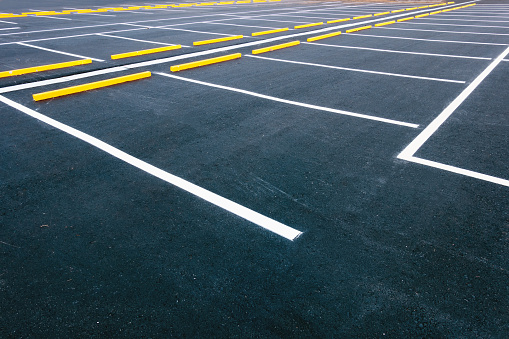 Let’s look at the best practices for proper asphalt parking lot maintenance. The four most precious assets associated with a commercial building; the roof, the HVAC system, the elevator (if there is one), and the parking lot. The parking lot is the first impression of your company to your employees; as well as, your client base. A decision as to do business with a company or not…often comes right in the parking lot. The expected useful life of a parking lot (that was properly constructed) should be 15-20 years providing proper maintenance has been applied.
Let’s look at the best practices for proper asphalt parking lot maintenance. The four most precious assets associated with a commercial building; the roof, the HVAC system, the elevator (if there is one), and the parking lot. The parking lot is the first impression of your company to your employees; as well as, your client base. A decision as to do business with a company or not…often comes right in the parking lot. The expected useful life of a parking lot (that was properly constructed) should be 15-20 years providing proper maintenance has been applied.
Download Printable Article (PDF) >>>
Proper Asphalt Parking Lot Maintenance Includes:
• Seal coating every two years
• Crack sealing as soon as they appear, and before they widen/worsen.
• New striping for safe navigation by pedestrians and motorists.
• Proper signage
• Pothole repairs as soon as they appear.
• Inlet repair at the first sign of failure
• Water should never be standing in a parking lot- find/remediate the root cause. Pavement failure is often the result of standing water and the subsequent freeze-thaw cycles. Small untreated cracks eventually turn into potholes which cause the pavement to fail. Once this or alligatoring occurs, there is no course of action other than costly reconstruction.
Best Practices for Proper Asphalt Parking Lot Maintenance fall into 3 Categories
1. Must do: Consisting of concerns revolving around property and personal liabilities. Some potential hazards include raised sidewalk, broken curb, potholes, large cracks, alligatored areas, and failing inlets.
2. Should do: Consisting of preventative maintenance measures that will provide life cycle cost savings by “getting ahead” of tomorrows problems today. These include crack sealing, seal coating and small repairs.
3. Could do: When the budget permits, reconstructing the area earlier is better than later. Costly base repairs can often be avoided if milling and paving are performed early.



